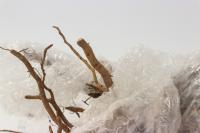1、 Curing method
1. Temperature: cherry blossoms are cold resistant and adaptable. They can grow normally at 5 ~ 25 ℃. The most suitable temperature is 15 ℃, and it can survive at a minimum of minus five degrees
2. Moisture: it is extremely sensitive to moisture. It is afraid of drought and ponding. Therefore, it is necessary to keep the soil slightly moist without ponding

3. Soil: Sakura has high requirements for soil. It's best to be slightly acidic and fertile as much as possible. Mix it with loose sandy soil with good drainage effect and some culture soil
4. Light: it has high requirements for light. It needs plenty of sunshine from seedling to flowering. The more sunshine, the more beautiful the flowers will be

2、 Breeding skills
1. Cutting: when the temperature is about 15 ℃, cut a new shoot that has begun to harden, about six centimeters. Cutting into the sandy soil in the greenhouse, then start shading, and then irradiate the sun three days later. New roots will grow in about half a month
2. Spend summer: the higher temperature in summer will have an adverse impact on its growth. If it exceeds 30 ℃, it will stop growing, so pay attention to cooling in summer

3、 Diagnosis and treatment problems
1. Perforated brown spot: when the disease occurs, there will be many purple brown spots on the leaves, which will gradually expand. In serious cases, the leaves will wither and fall. If the disease is found, it should be sprayed with Bordeaux liquid in time
2. Leaf blight: it usually occurs in summer. When it occurs, yellow green circular spots will appear on the leaves and slowly turn into brown spots, and the diseased leaves will not fall after dying. The diseased leaves should be removed and destroyed in time, and sprayed with mancozeb for control

4、 Other issues
1. Can you give it to someone: its flower language is "stay together" and "family harmony". It is also an ornamental plant with beautiful flowers, so it is very suitable for giving it to others
2. Whether it can be raised at home: as an ornamental plant, it is very suitable for breeding at home. It can be placed on the balcony at ordinary times. In the hot summer sun, it should be moved to a place with weak light intensity


 jackfruit
jackfruit snake plant
snake plant hibiscus
hibiscus hydrangea
hydrangea lavender
lavender Green roses climb al...
Green roses climb al... If you don't pay att...
If you don't pay att... Management of four g...
Management of four g...
































